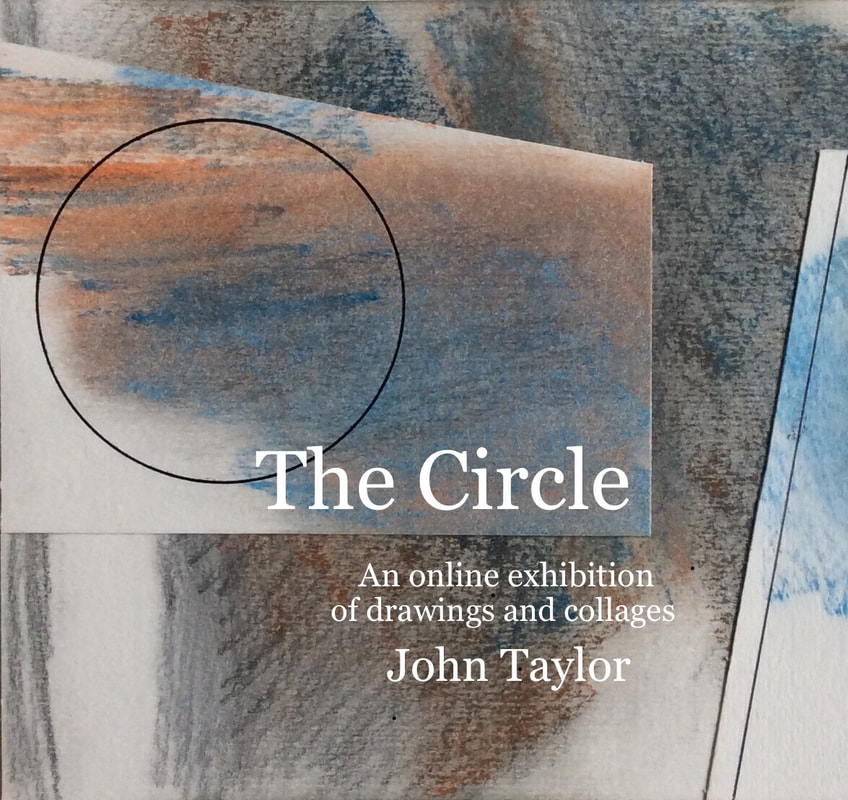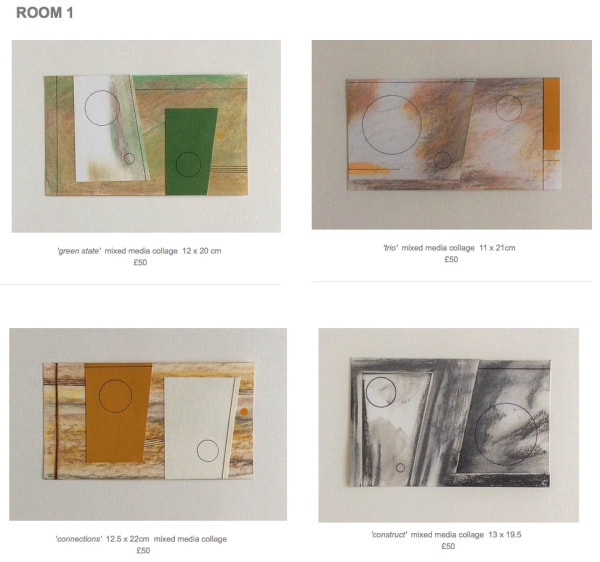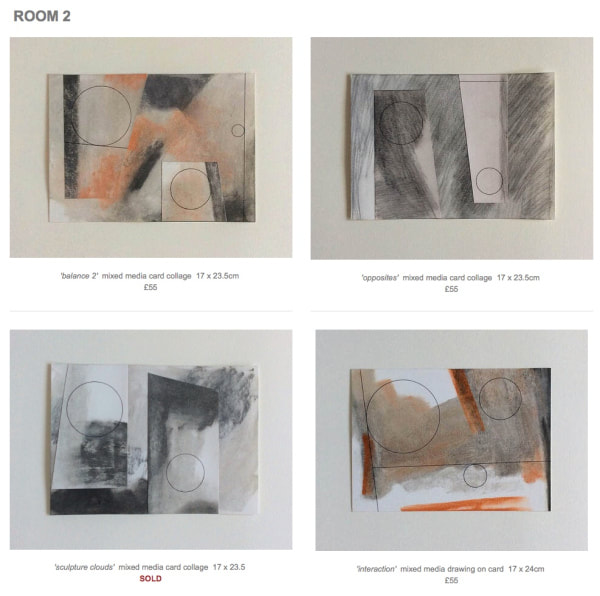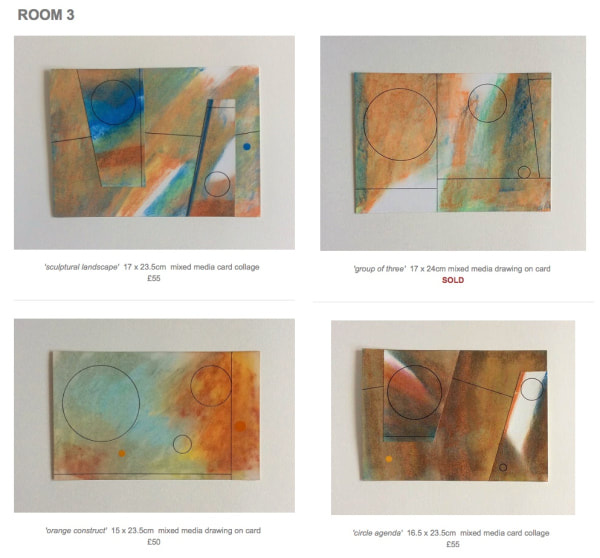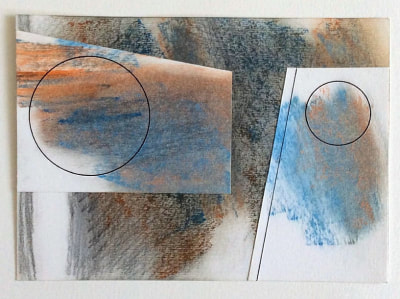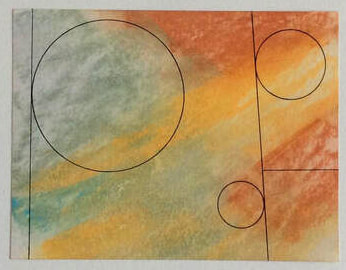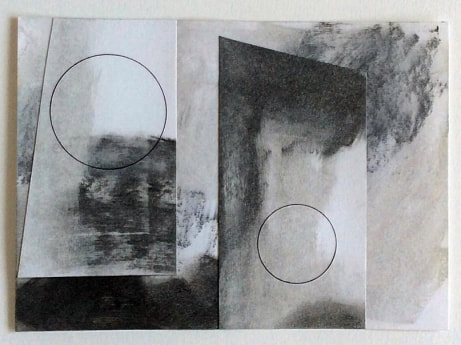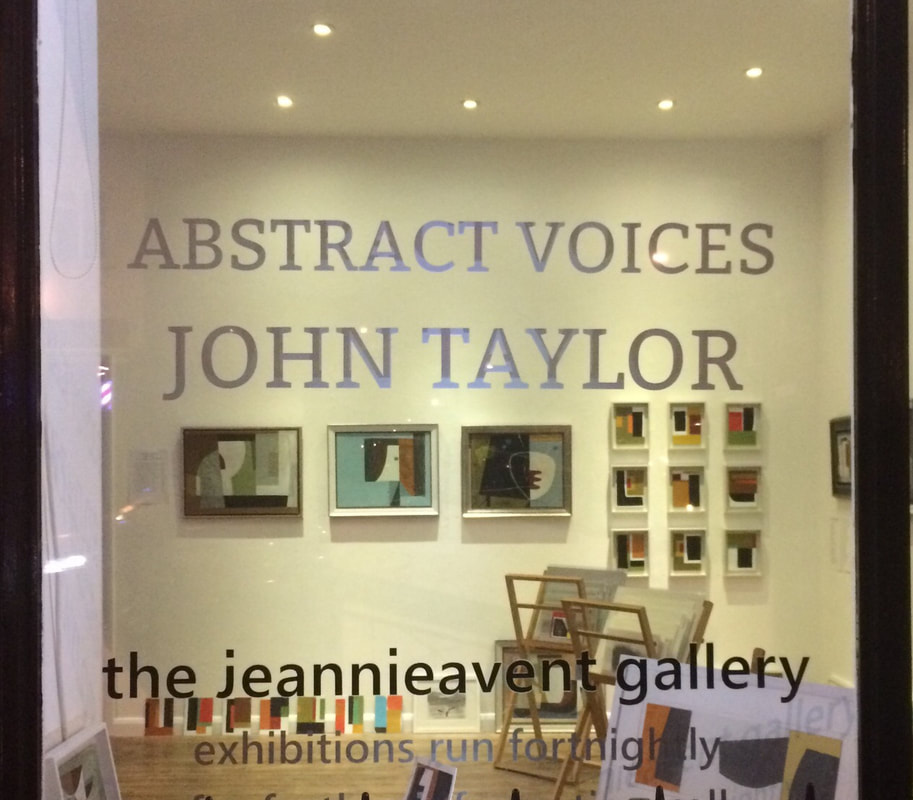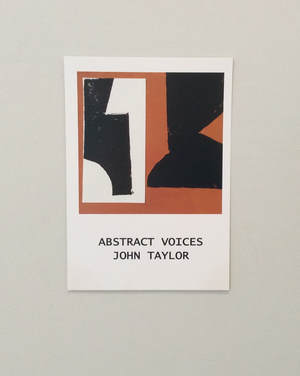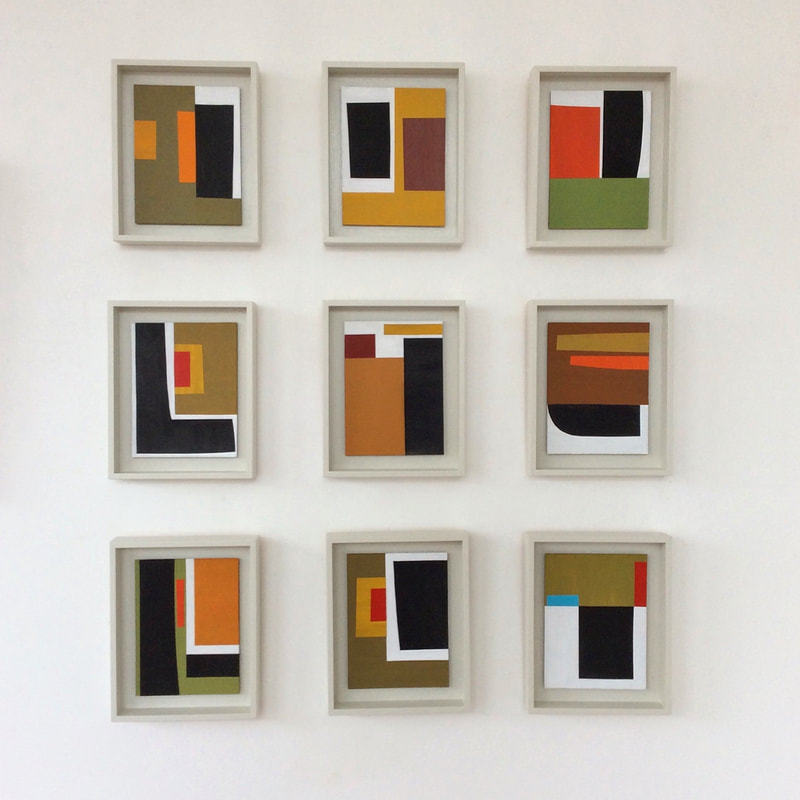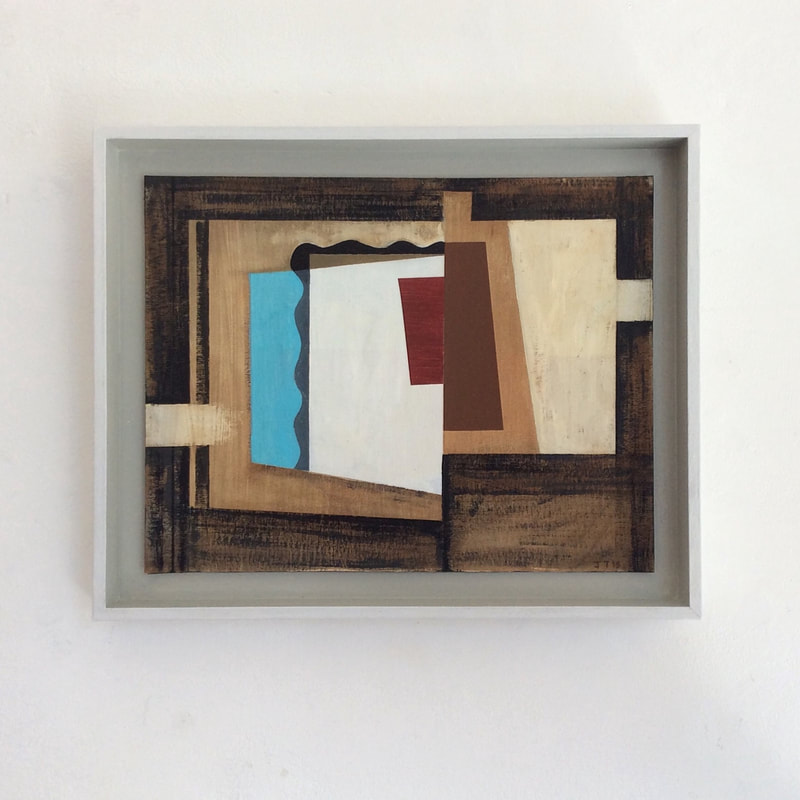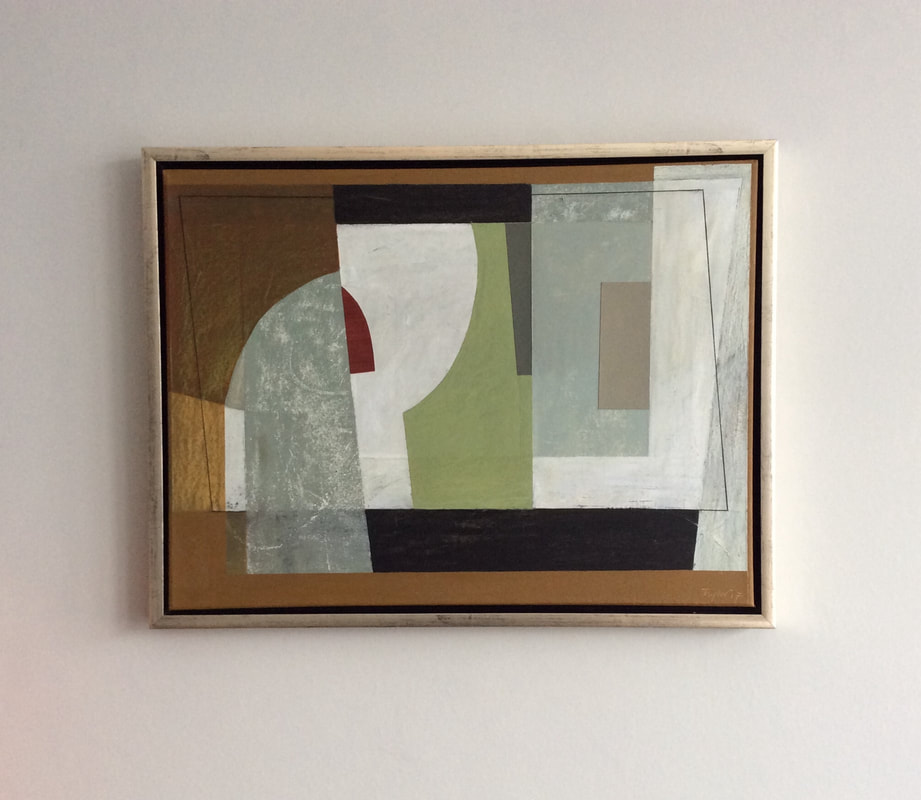Ruminations: Exhibition Reviews
Exhibition reviews and other writing. All text © Geoff Hands.
JOHN TAYLOR – The Circle – 18 June to 1 August 2020
An on-line exhibition of drawings and collages
Despite holding reservations about on-line exhibitions, even in these days of full or partial Covid lockdown, I surprisingly found myself intrigued by John Taylor’s current website initiative. Ideally, exhibitions should be seen ‘in the flesh’ whenever possible, but of course since the reproduction of images became technically possible, this has never been sacrosanct – thank goodness. I last wrote about Taylor’s collage/paintings shown at the Jeannie Avent Gallery, East Dulwich in the Spring of 2018 after coming across his work via my iPhone, which prompted a day out to see if the actual works were as impressive as the miniature versions were on-screen.
As if to challenge the logic of the notion of a current show ‘The Circle’ brings together twenty-five unframed mixed media works from 2011 and is best viewed on a computer or tablet for decent sized reproductions of the works. Having not been able to attend his last show, ‘Abstract Realities’, at Westminster Reference Library just before last Christmas I was pleased at this opportunity to see more of Taylor’s work, albeit nine years after completion. Not that this time element is especially problematic and in fact there is a sense of circumstances being just right for this particular project to leave the studio. For though it’s not a retrospective in the conventional sense, it is something of a treat to see works that were made purely for their own sake, privately as it were, and not for commercial reasons.
As if to challenge the logic of the notion of a current show ‘The Circle’ brings together twenty-five unframed mixed media works from 2011 and is best viewed on a computer or tablet for decent sized reproductions of the works. Having not been able to attend his last show, ‘Abstract Realities’, at Westminster Reference Library just before last Christmas I was pleased at this opportunity to see more of Taylor’s work, albeit nine years after completion. Not that this time element is especially problematic and in fact there is a sense of circumstances being just right for this particular project to leave the studio. For though it’s not a retrospective in the conventional sense, it is something of a treat to see works that were made purely for their own sake, privately as it were, and not for commercial reasons.
Clearly with the convention of a small gallery in mind, the indicative model of the solo show has guided the simple but effective structure of this exhibition. In a sense the display or the event is not at all ‘virtual’ as it only exists in reality as a digital platform, although the original works are solidly ‘real’ as we would normally understand mixed media works on card. Divided into three rooms (there’s no need to use the term ‘virtual’ anymore), the similarly sized works are split into groups of eight or nine images that might be comfortably viewed in three modest salons or vestibules. Thankfully, the works have not been presented to look like they are hung on a wall with some clever Photoshop technique, but are photographed in a straightforward manner lying on sheets of paper with subtle shadows indicating the gentle curve of unstretched paper. They will not be perfectly flat until someone has one framed.
From a recent Instagram exchange of messages the artist confirmed that the works were produced on a daily basis throughout the year in question as a “365 project”. This daily assignment suggests a degree of perseverance, discipline and resolve that, if my own experience of similar tasks with collage and drawing is similar, calls for the contradictory necessity to often see what happens with the process in an informal manner before attending to other forms of studio practice. Taylor also revealed a usefully relaxed attitude in saying that, “It’s my kind of sketchbook really. Bits of cardboard and paper rather than a book of ideas.” But let’s not be deceived by any notion of indifference or impassiveness, as Taylor’s engagement with the selection, disparity and handling of the media constitutes an active form of research that allows for far more than a simple process-lead endeavour. Taylor’s undeniable Constructivist tendency also reveals a highly intelligent ‘eye’ that is a pure pleasure to witness in his work generally. In this selection of works, cutting up, colour-scribbling and the use of linear sub-divisions and boundaries is controlled by impressive skill in the placement of rectangular and circular forms to attain asymmetrical balance within the compositions. In other words, the works are highly sophisticated and exemplary examples of a particular territory of abstraction.
The works could well function as small studies for larger works, significantly grand and spacious canvases or even sculptures set in a large garden or parkland as a feel of the monumental pervades the imagery. Typically, the circular forms float in front of solid colour or sketchier, hand drawn backgrounds, although in two compositions, ‘Combinations’ and ‘Balance’, there are circular forms that might be described more appropriately as discs. By the time I had reached the penultimate image in Room 3, I started to read the titles and found ‘Circle Myth’. Having just read about the newly discovered giant Neolithic structure on the Salisbury Plain in Wiltshire, I could not avoid thinking about the fascination that many artists and writers still have for our ancient landscape. With the Summer Solstice just passed and Paul Nash’s ‘Landscape of the Summer Solstice’ also very much in mind a notion of landscape as a fundamental subject in art history (even if ‘landscape’ is at a low ebb at the moment) now imposes itself on my thinking. Nash’s ‘Equivalents for the Megaliths’ also springs to mind of course, which contains centrally placed geometric forms set in a simply rendered, painterly range of light yellows, ochres and greys that might be sensed in stronger colouration in some of the images in Room 3 of ‘The Circle’ (most especially ‘Sculptural Landscape’). Briefly letting my mind wander still further from the show for a while (an inevitable consequence of sitting at the computer rather than in a normal gallery context) I also recall the ‘Circle: International Survey of Constructivist Art’ publication involving Ben Nicholson, who surely must be a positive influence on Taylor’s work. In fact when I asked about a Nicholson link, Taylor confessed that he “…hesitated showing them for ages because of the inevitable comparison with Nicholson”. But he continued to explain that, “…they show my roots”. This is quite understandable and, I would argue, something to allow to unfold over time as a worthy lineage.
Whatever the associations, intended or otherwise, one must always return to the work of course. So having become aware of the addition of titles (note: Taylor has revealed that the titles were added before going online, which is fascinating as I wonder if stepping back from production allowed a usefully distanced overview away from process and production for different a mode of contemplation) I returned to Room 1. This navigation of the exhibition is a habit I commonly adopt for actual exhibitions, as a sometimes hurried overview requires one to retrace the initial journey. To find myself doing this online was certainly a surprise, though a reassuring one.
Looking again, giving more than cursory glances that may happen in walking around a show, an initial impression is formed of non-perspectival space compositions in which shape and placement is paramount. In these images visual space is essentially flat, although some of the rectangular forms could indicate perspective rendering. But on closer inspection vertical and horizontal lines also suggest spaces or areas receding. Occasionally a rectangular, trapezoid, form literally overlaps a drawn line to also create a sense of recession. Ins and outs, adjacent to, atmospheric backgrounds and bodily foregrounds are generated by the content. The circles, relatively large or small, often create a sense of floating but in a very slow motion akin to our experience of the moon or notions of the planetary. More forcefully intimating a notionally ‘real world’ are the titles. In Room 1 ‘Night Circles’ references a time of day and ‘Circle Talk’ could allude to a relationship between the three circular entities or the smallest group of people beyond a pair, with whatever narrative or consequences one might imagine. In the next room, ‘Sculpture Clouds’’ and ‘Sculpture Circles’ reference structures that could well be constructivist forms or ancient standing stones that predate what we culturally call ‘art’. ‘Dusk Moment’also summons a specific interval of time between day and night. Back in the final room, ‘Circle Myth’ again attracts my attention and now I am further intrigued by the various combinations of circular forms that feature in all of the works, but perhaps more emphatically here in Room 3. The works are suggestively intimate as two, three or four and a half discs converse in a rectangular environment. Perhaps these are conversation pieces, alluding ever so subtly to the eighteenth century English painting tradition of group portraiture in landscape or interiors. So, once more, the works take the observer on a digression by design or unintended intimation, fascinatingly open to the imagination.
‘The Circle’ prompts me to re-think my aversion to the online exhibition phenomenon – particularly as it’s here to stay, pandemic or no pandemic. But for an even more satisfying experience of the works another option would be to invest in one, and without a gallery mark up, there are bargains to be had from this show.
Ruminations: Exhibition Reviews
Exhibition reviews and other writing. All text © Geoff Hands.
JOHN TAYLOR – The CircleJohn Taylor – The Circle18 June to 1 August 2018An on-line exhibition of drawings and collages
All images © John Taylor.
LINKS/FURTHER INFORMATION:
John Taylor – http://www.johntaylorpaintings.com
Abstract Voices review – https://fineartruminations.com/2018/04/21/john-taylor-abstract-voices/
Abstract Realities on ArtRabbit – https://www.artrabbit.com/events/abstract-realities-paintings-by-john-taylor
Guardian article – https://www.theguardian.com/uk-news/2020/jun/22/scrap-stonehenge-road-tunnel-say-archaeologists-neolithic-discovery
The Stonehenge Hidden Landscape Project – https://lbi-archpro.org/cs/stonehenge/
Tate: Paul Nash – https://www.tate.org.uk/tate-etc/issue-28-summer-2013/paul-nashs-equivalents-megaliths-1935
Rushing through an exhibition: Review of Calder on CFA – https://www.conceptualfinearts.com/cfa/2016/02/09/the-good-art-generates-new-art-a-short-story-about-alexander-calders-retrospective-at-the-tate/
Exhibition reviews and other writing. All text © Geoff Hands.
JOHN TAYLOR – The CircleJohn Taylor – The Circle18 June to 1 August 2018An on-line exhibition of drawings and collages
All images © John Taylor.
LINKS/FURTHER INFORMATION:
John Taylor – http://www.johntaylorpaintings.com
Abstract Voices review – https://fineartruminations.com/2018/04/21/john-taylor-abstract-voices/
Abstract Realities on ArtRabbit – https://www.artrabbit.com/events/abstract-realities-paintings-by-john-taylor
Guardian article – https://www.theguardian.com/uk-news/2020/jun/22/scrap-stonehenge-road-tunnel-say-archaeologists-neolithic-discovery
The Stonehenge Hidden Landscape Project – https://lbi-archpro.org/cs/stonehenge/
Tate: Paul Nash – https://www.tate.org.uk/tate-etc/issue-28-summer-2013/paul-nashs-equivalents-megaliths-1935
Rushing through an exhibition: Review of Calder on CFA – https://www.conceptualfinearts.com/cfa/2016/02/09/the-good-art-generates-new-art-a-short-story-about-alexander-calders-retrospective-at-the-tate/
|
'nine collages' installation comprising of nine acrylic collages on board
'after barcelona' acrylic collage on board
'sense of occasion' mixed media on canvas
|
|
